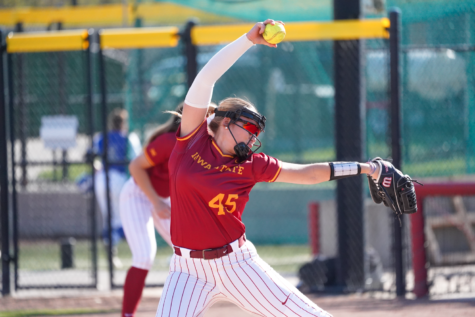The Left Lane
June 27, 2002
Lefties in sports are not uncommon. In fact, left-handed baseball players add a whole new dimension to their game.
Babe Ruth was a lefty. So was Ted Williams and Reggie Jackson. Some of the best pitchers in the game today are southpaws. Tom Glavine, Andy Pettitte, David Wells and 3-time NL Cy Young winner Randy Johnson all use the non-traditional way to produce whiffs.
Every major league baseball team has at least one left-handed pitcher on its roster, and now I know the reason why.
Left-handed pitchers are usually more successful against right-handed batters (which make up the majority) because the way their body is turned hides their throwing arm from the batter, making it more difficult to pick up the pitch and gauge its rotation.
Also, it’s a little-known fact – unless you’re a baseball philosopher or historian – that left-handed pitchers will locate their pitches on the left side of home plate with much more ease than righties. When you’re right-handed, that equals an inside fastball.
The good southpaw pitcher can set you up with one of those and then get you reaching with a pitch on the outside corner.
Even if your arm isn’t a flamethrower, you might have a shot at playing first base. A left-handed player is desired at that position in pick-off situations. The lefty can get his catching hand to the runner quicker by not having to reach across his or her body.
Confused? It’s all quite simple and common sense. Stay with me here.
The left-handed batter also has an advantage in getting to first after a hit. Being lined up on the left side of the plate gets him a step closer to a single – one that can be very crucial.
A strong majority of the pitchers in the majors are still right-handed. This means that when a right-handed pitcher throws the ball, it will naturally tail in for lefties instead of out. It’s considered easier to make contact with an inside off-speed pitch than trying to reach for it.
This is why you see teams bring in a lefty just for one batter when players with names like Bonds and Griffey come to the plate.
With the help of the “voice of the Cyclones” Pete Taylor and one of the most notable Cyclones of all time, Gary Thompson, I have come to find out that left-handed athletes haven’t been prevalent at Iowa State, but they have made a difference.
The most notable left-handers to play at Iowa State in recent history include Angie Welle, Julius “Julo” Michalik and Lafester Rhodes.
Tyray Pearson is left-handed as well, but shoots with his right.
Three-time all-American Angie Welle used her left hand quite often in becoming Iowa State’s all-time career leader in eight statistical categories, including scoring, rebounding and blocked shots. She led the Big 12 in scoring and rebounding last season.
Michalik, a native of Slovakia, is still considered one of the most complete basketball players to compete for Iowa State. He truly was a triple threat and proved it with his numbers from his four-year career at Iowa State. He ranks fifth on Iowa State’s all-time scoring list, seventh in assists and 11th in rebounding.
Rhodes still owns Iowa State’s single-game scoring record with his 54-point performance against the Hawkeyes in 1987 and was taken as the first overall pick of the CBA draft in 1988.
If you’re really up on your ISU history, you might remember that a lefty named Andrew Parker led the team in scoring in both 1978 and 1979. After his career, he ranks ninth in scoring at Iowa State.
Former ISU baseball player Nate Teut now plays for pay with the Florida Marlins. The southpaw pitcher made his major league debut in May.
So it’s still a hung jury whether lefties make better athletes. We’ll probably never know, but there have been a handful here that have gone on to greatness.
If only I’d been left-handed – maybe I could have been the next Lafester or Julius Michalik.
















